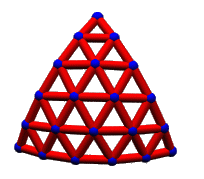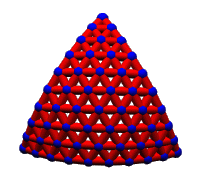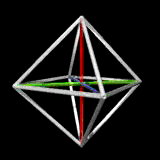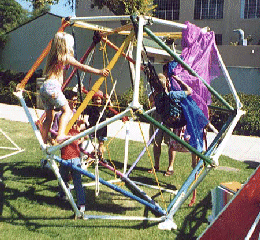Glossary of Terms
Angle vs. Frequency

Shape is defined by angles irrespective of scale. A regular tetrahedron has unchanging surface and central angles regardless of its size -- and so for any object, no matter how complex. This angular aspect of experience links metaphorically to the idea of eternal principles. The ideally angular is only fleetingly grasped through intuition however. Our actual communications of eternal verities inevitably appear abberational -- idiosyncratic even -- doomed to become nonsense in the long (or short?) run.
The concept of Frequency identifies the cyclic aspect of experience. An object persists in space and time as an aggregate of repeating energy events. The electromagnetic spectrum separates angular identities according to their different energy involvements. With the addition of frequency, the hitherto only-angle-defined becomes special case, temporal, mortal.
Or, borrowing computer terminology, we could say that eternal principles define the template class hierarchy, and special case events represent instantiations of these templates, as application objects with a finite life span, measurable in clock cycles.

For further reading:
- Synergetics 515.00
- On the Omnidirectional Halo
- Java applet by Kirby Urner

